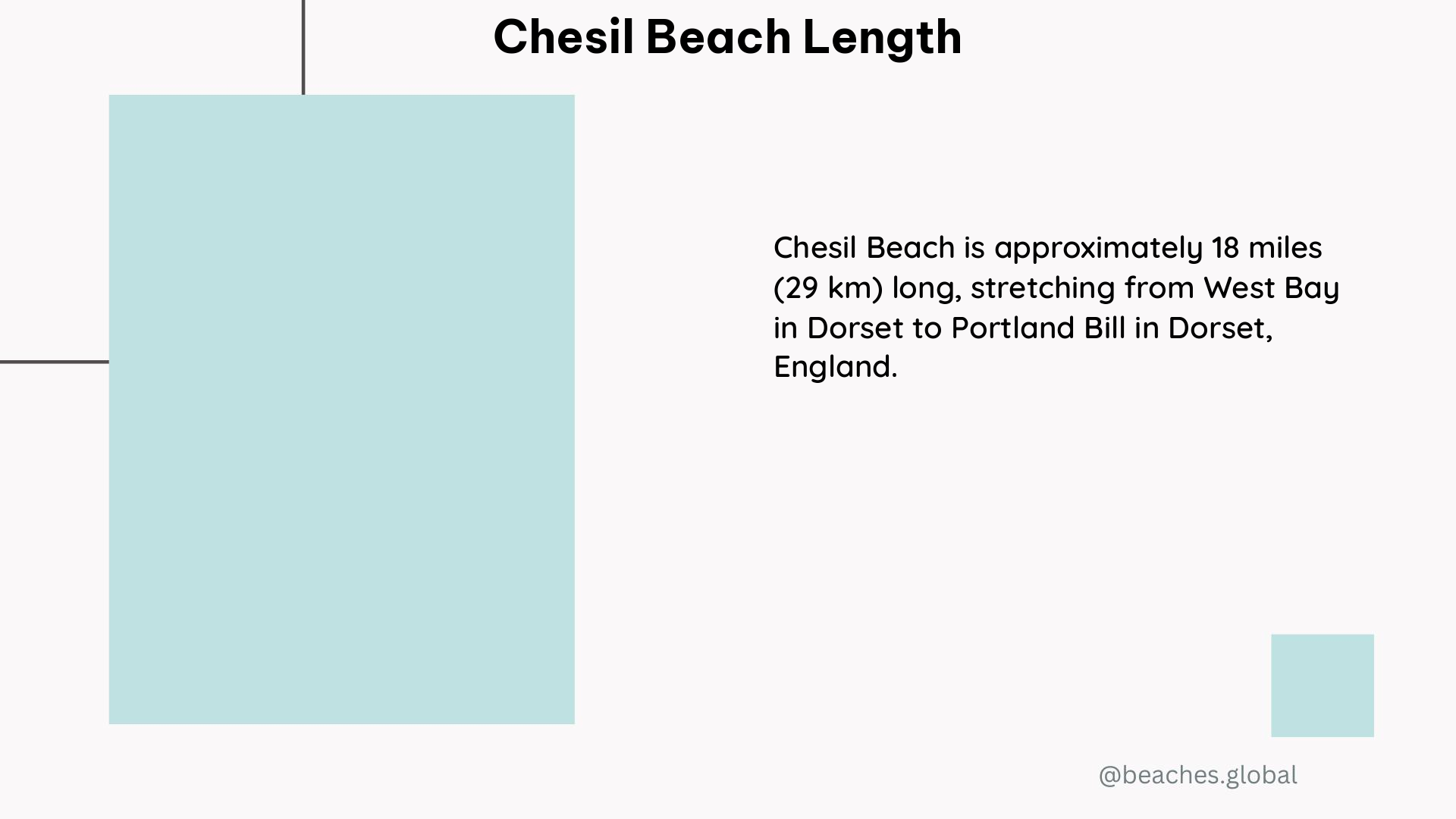Chesil Beach is a remarkable natural wonder located in Dorset, England. Stretching an impressive 28 kilometers (18 miles) along the Jurassic Coast, this unique barrier beach is a true gem for beach enthusiasts and nature lovers alike. From its stunning pebble formations to its rich history and diverse wildlife, Chesil Beach offers a captivating experience for all who visit.
The Remarkable Length of Chesil Beach
Chesil Beach is a staggering 28 kilometers (18 miles) long, making it one of the longest barrier beaches in the world. This impressive length is the result of a complex geological process that began over 25,000 years ago during the last glacial phase. As sea levels rose and fell, the beach gradually formed, creating a unique and ever-changing landscape.
The Pebble Formations of Chesil Beach

One of the most striking features of Chesil Beach is the gradual change in pebble size along its length. At the eastern end, near Portland, the pebbles are fist-sized, while at the western end, near Bridport, they are as small as peas. This gradation is due to the varying strength of tidal currents, which gradually move the smaller pebbles westward over time.
| Location | Pebble Size |
|---|---|
| Portland (East) | Fist-sized |
| Bridport (West) | Pea-sized |
The sheer number of pebbles on Chesil Beach is also staggering, with an estimated 180 billion pebbles making up this remarkable natural formation.
The Geological History of Chesil Beach
Chesil Beach’s formation began around 25,000 years ago during the last glacial phase, when sea levels were much lower than they are today. As the seas warmed and ice melted, sea levels rose rapidly, eroding loose sand and gravel deposits and creating the barrier ridge that we see today. This process continued for thousands of years, with the beach reaching its current position approximately 5,000 years ago.
The Importance of Chesil Beach
Chesil Beach is not only a geological marvel but also plays a crucial role in protecting the nearby towns and villages from flooding and erosion. The beach acts as a natural barrier, shielding the town of Weymouth and the village of Chiswell from the powerful waves and storms that batter the Dorset coast.
The Rich History of Chesil Beach
Chesil Beach has a long and fascinating history, particularly when it comes to shipwrecks. During the age of sail, the beach was notorious for its treacherous conditions, with many vessels falling victim to the powerful storms and strong currents. Today, the National Coastwatch Institution maintains lookouts along the beach, providing coverage and assistance when needed.
The Wildlife of Chesil Beach
Chesil Beach is also home to a diverse array of wildlife, including a variety of bird species that nest along the beach during the bird nesting season from April to August. Visitors are advised to respect the wildlife and avoid disturbing any nesting birds during this time.
Conclusion
Chesil Beach is a truly remarkable natural wonder, with its impressive 28-kilometer length, unique pebble formations, and rich history. Whether you’re a beach enthusiast, a nature lover, or simply someone who appreciates the beauty of the natural world, Chesil Beach is a destination that is sure to captivate and inspire. So why not plan a visit and experience the magic of this incredible barrier beach for yourself?
References:
– Chesil Beach – Introduction – Chesil Beach Britain from the Air
– Chesil Beach Wikipedia
– Chesil Beach Simple Wikipedia
– Chesil Beach Britannica
– Chesil Beach
